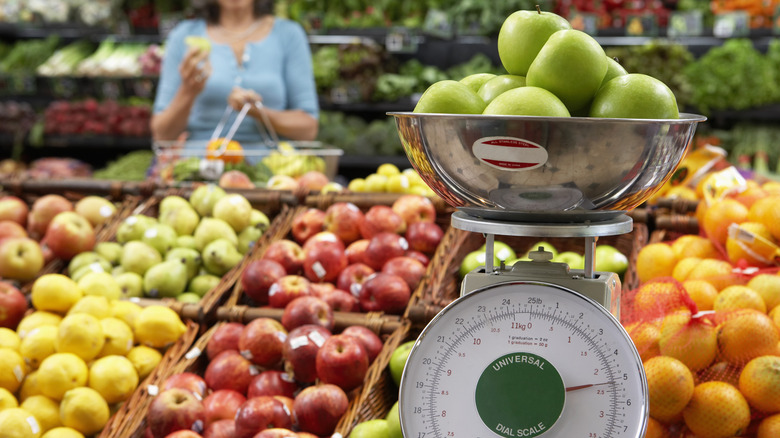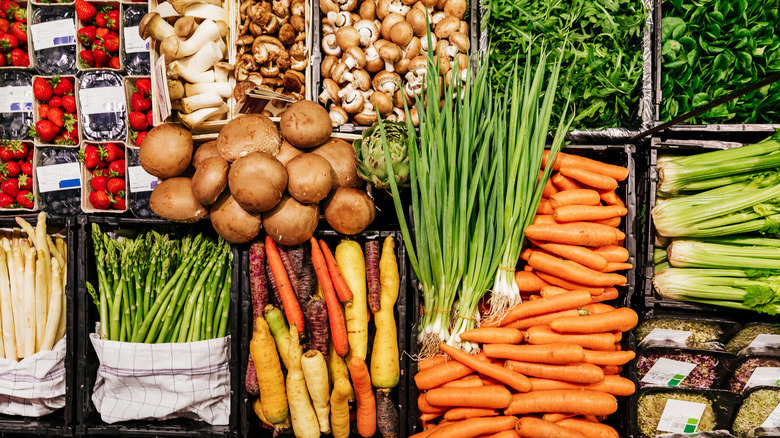The Dollar-Per-Pound Rule To Save Money At The Grocery Store
If you're reading this article, it means you're interested in home cooking, and if you're a home cook, you buy a lot of groceries. This inevitably means that you've been suffering from the same sticker shock we have when it comes to the runaway train of rising grocery costs over the last several years. You have undoubtedly instituted some strategies to adapt — maybe you've cut back on highly processed foods or planted a home garden (two things we heartily recommend doing!). There's one more surefire money-saving tip to implement on your next shopping trip: the dollar-per-pound rule coined by financial expert Jeff Yeager.
The concept is simple: Try to buy items at the grocery store that average out to the cost of one dollar per pound at most. If you try this — even as just a thought experiment the next time you shop — you'll find that most of the foods you should be eating (like legumes, grains, and fresh fruits and vegetables) actually meet this criterion. By the same token, you're likely to realize that some of the items you usually toss in your cart are not even close to being cost-effective. Let's take a closer look at why grocery prices have risen so sharply and what specific kinds of foods meet the dollar-per-pound rule.
The war on our wallets and how to fight back
According to the U.S. Government Accountability Office, 2022 presented the largest annual increase in grocery costs since the 1980s. Prices increased by approximately 11% between 2021 and 2022, exponentially higher than the previous annual average increase of 2%. In May 2023, prices were up by 6.7% when compared to the previous year. The purported causes were varied but often came down to disruptions or changes to the supply chain due to war and the pandemic. Worst of all, these increased prices appear to be the new normal. How do we not only adjust to this new reality but thrive? By being penny-pinching sons of guns.
On your next trip to the store, hang out in the produce department. You'll notice that (generally speaking), everything from apples and watermelons to asparagus and zucchini all cost a dollar a pound at most. Elsewhere in the store, grains like bulgur wheat or legumes like lentils can be had for cheap. Other items with a lengthy shelf life (think sour cream and yogurt) often meet the rule when on sale. If you see rocking deals, buy in bulk and put your freezer to good use. Even the limitations of this strategy — like the seasonality of certain fresh produce — can be a great way to provide structure to your menu planning. Few things are as satisfying, or grounding, as seasonal eating. Now, go forth and be stingy.

